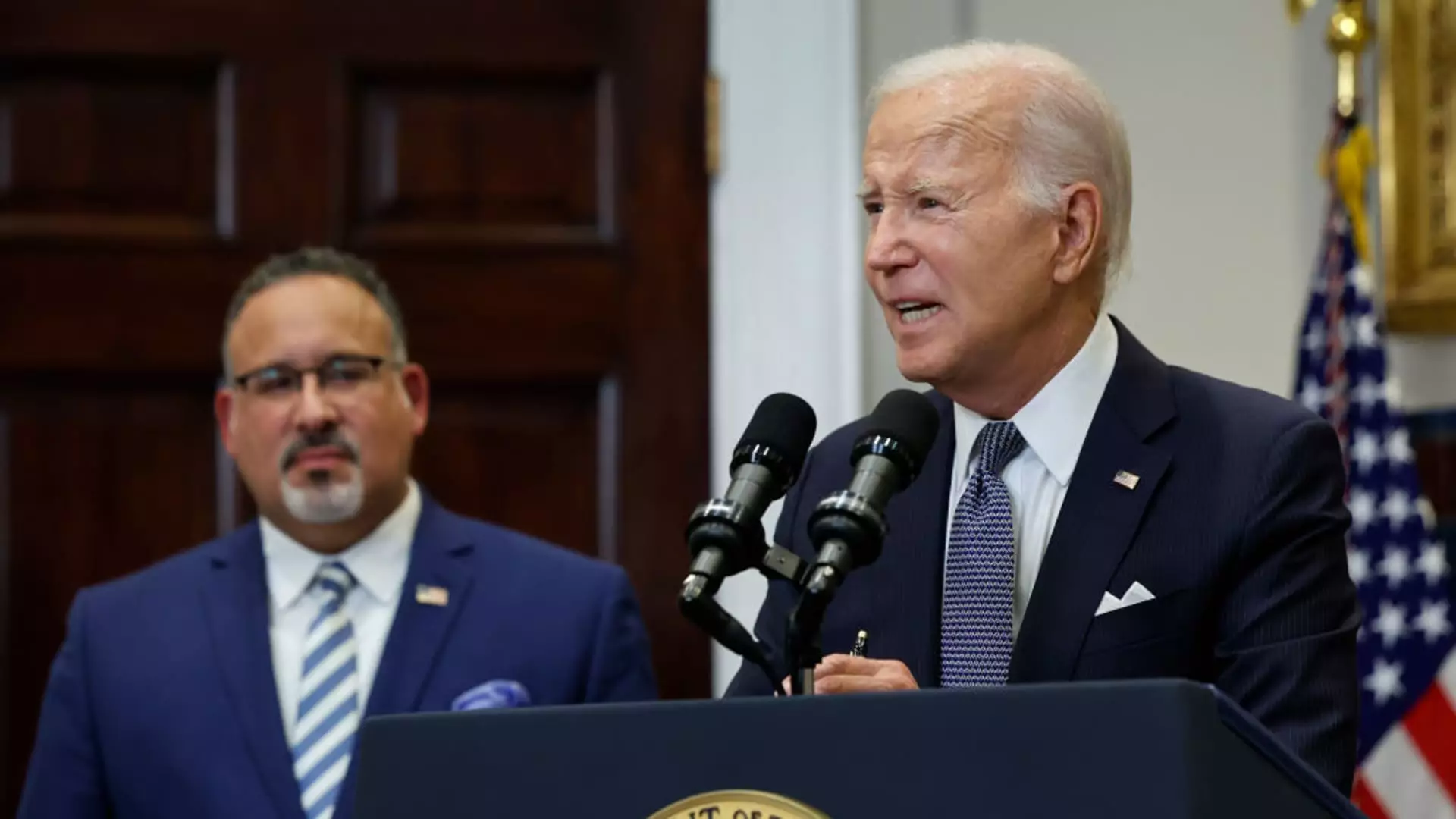The landscape of student loan debt in the United States is undergoing a significant transformation. After a prolonged period of relief, which was initiated in response to the COVID-19 pandemic, new policies are poised to restore collection activities for borrowers who are in default. The memo from the U.S. Department of Education highlights the impending return to stringent collection measures, marking a period of heightened financial responsibility for millions of borrowers across the country.
Since the onset of the pandemic, federal student loan borrowers had been shielded from the consequences typically associated with defaults, such as wage garnishment and offsets to Social Security benefits. This pause in collection efforts allowed many borrowers to regain their footing without the immediate threat of financial penalties. However, this temporary relief has now come to an end, as the memo indicates that as early as October 2024, collections may resume aggressively. With approximately 7.5 million federal borrowers classified as being in default as of 2022, the potential for financial distress echoes the hardships felt during prior economic downturns, such as the 2008 mortgage crisis.
The Biden administration has taken measures to mitigate the default crisis. Among these is a 12-month “on-ramp” program for borrowers that expired on September 30, 2024. This initiative was designed to ease the transition back into repayment by shielding borrowers from severe penalties during the re-entry phase. Although the program provided temporary respite, the reality of resumed collections places significant pressure on borrowers to maintain their repayment schedules in an economy where many are still striving for stability.
To curtail the risks of default, the memo outlines a plan to streamline the process for borrowers to enroll in income-driven repayment plans. This includes allowing the Department of Education to retrieve income data directly from the IRS to facilitate automatic enrollment for those who fall behind on payments. By basing repayment amounts on discretionary income and family size, the program aims to reduce financial strain on borrowers.
Crucially, the memo emphasizes the necessity of identifying borrowers who may qualify for debt forgiveness prior to them formally entering default. Mark Kantrowitz, a noted higher education analyst, underscores this point as innovative. By leveraging data from other federal agencies, the Education Department can proactively assist those eligible for forgiveness, allowing borrowers to navigate the complexities of their debt without falling into deeper financial hardship. Advocating for such innovations is a decisive shift towards a more compassionate approach to student loan management.
Additionally, the memo encourages discussions around increasing incentive rates for borrowers who opt for automatic payments. Currently, a minimal reduction in interest rates of 0.25 percentage points is offered, but enhancing this incentive could provide a more substantial encouragement for borrowers to stay current on their loans.
Despite the outlined measures, uncertainties loom over the potential implementation of these policies, especially with the imminent presidential transition. The dynamics of policy decisions can shift significantly with new administrations, raising questions about the sustainability of these programs. Kantrowitz points out the inherent vulnerabilities in policy memos which can easily be revoked or altered by succeeding administrations. Thus, the long-term effectiveness of the initiatives proposed in the memo remains an open question.
One of the more promising changes noted in the memo includes provisions allowing borrowers in default access to Income-Based Repayment plans, which fluidly connect them to forgiveness pathways. Thus far, borrowers needed to rectify their default status before they could benefit from such equitable repayment mechanisms. This policy shift could provide a much-needed avenue for many struggling borrowers to regain control of their financial obligations.
The memo also touches on protecting Social Security benefits from collection actions. By raising the threshold of protected income, more individuals will be able to safeguard their essential benefits during collection proceedings. This strategic move could significantly alleviate the financial burdens faced by those who rely on Social Security as a primary source of income.
The anticipated collection resumption catalyzes a broader conversation regarding the responsibilities of both borrowers and the government in the realm of education financing. With an emphasis on procedural accessibility, debunking the complexities of loan repayments, and ensuring adequate safety nets for the most vulnerable, the path forward is filled not only with challenges but also opportunities for reform and support.
As the student loan landscape evolves, borrowers find themselves at a historic crossroads. The imminent resumption of collections amplifies the urgency for borrowers to engage with their options and stay informed about the resources available to them. Equally, policymakers must heed these developments to ensure that vulnerable populations are not left behind. The future of student loan management hinges not just on stringent collections but also on empathy, understanding, and a deliberate effort to ease the burdens of millions of borrowers navigating this complex maze of debt.

